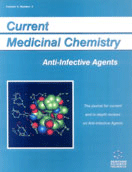Abstract
Infection with HCV is a global concern. Estimates from the WHO suggest that over 170 million people are infected worldwide with over 2.7 million people infected in the US. Current therapies including interferon (IFN-α) and ribavirin are ineffective against many HCV genotypes and a sustained viral response is difficult to achieve in many HCV patients. Inconvenient dosing regimens and overall toxicity conspire to make these current therapies inadequate. Although the recent development of pegylated interferons have shown signs of improved genotype applicability and reduced toxicity, it is believed that alternative therapies will be needed to battle this disease on a global scale. The incidence of HIV/HCV co-infection is a growing trend and our ability to effectively treat these patients is anticipated to be a significant medical challenge. For HIV-1, the successful development of nucleotide- and non-nucleotide-based reverse transcriptase inhibitors (NNRTIs) as well as HIV protease inhibitors (PIs) has afforded patients a variety of treatment options. Although 5-times more prevalent than HIV-1 infection, the development of target-directed HCV treatments has been less successful. Like HIV, the two HCV targets receiving the most attention are the protease (NS3-4A) and the polymerase (NS5B). Recently, the discovery of several classes of allosteric HCV NS5B inhibitors have been reported in the patent and scientific literature and many have made their way into clinical trials. This review will describe the nature of these novel inhibitors while drawing comparisons and contrasts to the structural biology, development, and clinical utility of HIV NNRTIs.
Keywords: viral hepatitis c (hcv), hemolytic anemia, rna viruses, polymerases, site-directed inhibitors
 6
6

